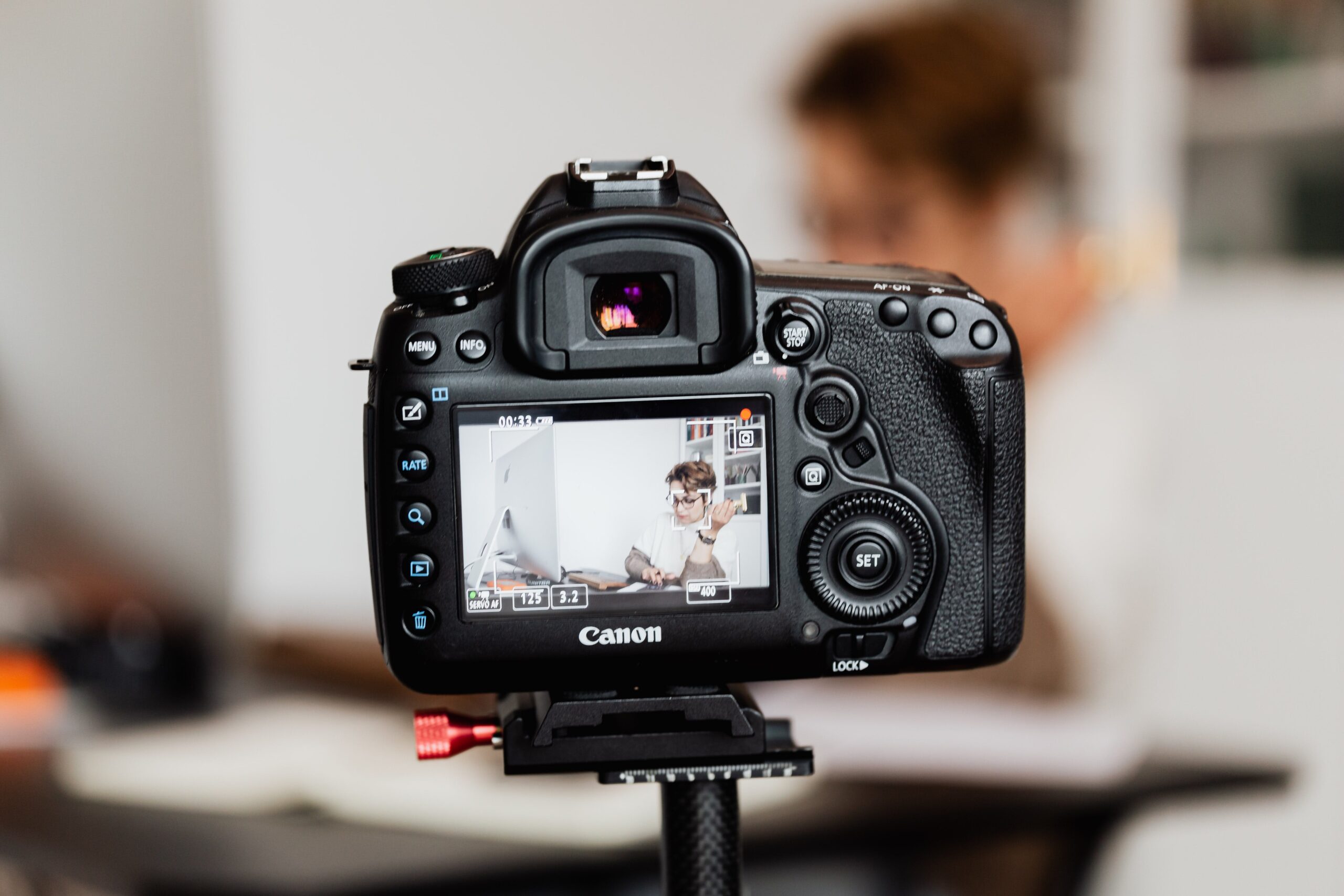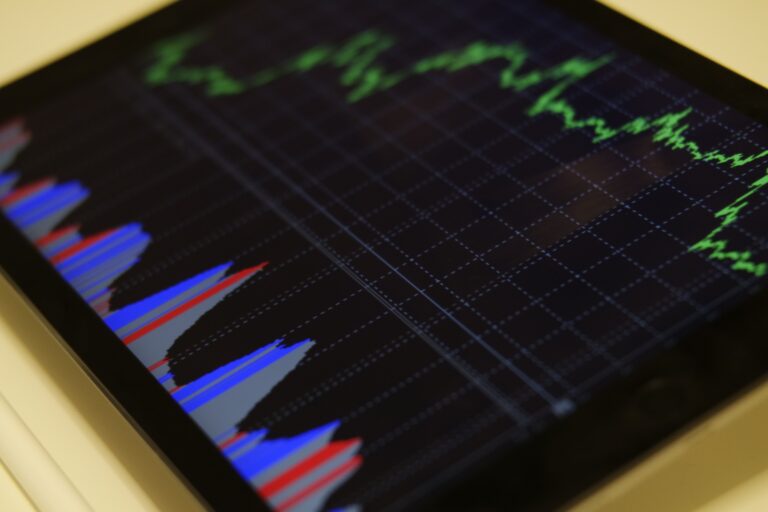
10 Ways to Save and Must Have Photography Gear, New or Used
In the ever-expanding universe of photography, quest for affordable photography gear is akin to setting sail on a treasure hunt. For budding enthusiasts or a seasoned pros, the allure of upgrading your equipment is undeniable and necessary to stay on top of the game. It’s because aspiring photographers know that every shutter click unveils a new facet of your creativity, and every lens change can transform the way to capture the world. The biggest downside that anyone knows is the price tags on top-notch gear which can often leave your wallet feeling a bit lighter or at times half empty than you’d prefer. Good news is that there are multitude of strategies and tips to obtain Must Have Photography Gear to help you save on photography gear without compromising on quality. If you’re eager to take stunning shots without breaking the bank, let’s dive into the fascinating world of photography gear savings!
The Quest for Affordable Photography Gear: A Treasure Hunt in Pixels
Before we dive headfirst into the world of finding affordable photography gear, let’s pause and ponder why saving on photography gear matters in the first place. What’s the driving force behind this quest for cost-effective equipment?
Photography gear savings are not merely about pinching pennies; they hold a deeper significance. It’s about financial prudence and, more importantly, unlocking the doors to your creative potential. When you save on photography gear, you free up resources that can be better allocated elsewhere in your photographic quest.
Think about it this way: each dollar saved on gear is a dollar that can be invested in other facets of photography. It’s the budget to attend that workshop by your favorite photographer, the funding for a photography expedition to a breathtaking location, or the chance to build a portfolio that showcases your unique perspective. Saving on photography gear, therefore, becomes a stepping stone toward achieving your photographic dreams.
Finding the Right Balance: Quality vs. Budget
One of the primary dilemmas faced by photographers, both novice and professional, is striking the right balance between quality and budget. The equation is not as straightforward as opting for the cheapest equipment available or splurging on the most expensive gear.
High-quality photography equipment typically comes with a commensurate price tag. Yet, it’s important to note that not every piece of gear has to be top-of-the-line. As you build your kit, consider your immediate and long-term goals. Start with affordable, quality gear that meets your current needs, and gradually upgrade as your skills and projects demand it.
The Importance of Long-Term Planning
A treasure hunt should not be a hasty unplanned purchase to achieve savings; it requires planning, patience. Similarly, when it comes to saving on photography gear, long-term strategy plays a pivotal role. Instead of impulsive purchases, make in advance a clear road map for your gear acquisitions.
Long-term planning begins with setting your photography goals. Determine the type of photography that excites you most—portraits, landscapes, macro, or perhaps a blend of genres. Your goals will guide your gear choices, ensuring that every piece of equipment you acquire aligns with your photographic journey.
For instance, if you aspire to be a portrait photographer, investing in high-quality portrait lenses should take precedence and be part of portrait photography gear. If you’re an enthusiast in the early stages of your photography journey, prioritize a versatile camera body and a kit lens.
Where to Find Affordable Photography Gear: Unearthing Hidden Treasures
Now that we’ve established the significance of saving on photography gear and the delicate balance between quality and budget, let’s move into thrilling exploration of where to find these hidden gems without breaking the bank. In this section, we’ll uncover the treasure troves that photographers frequent to discover affordable photography gear.
Diving into the World of Used Gear
One man’s trash is another man’s treasure, and this saying resonates profoundly in the world of photography. Used gear markets are like ancient treasure troves filled with remarkable finds. Here’s why they’re a goldmine for budget-conscious photographers:
Used gear, in many instances, is a window into another photographer’s odyssey. As upgrading equipment is always on the table to explore new photographic avenues, parting ways with existing gear is commonplace. This gear, though pre-loved, often remains in excellent condition. The motto “they don’t make them like they used to” holds true for many cameras and lenses, making used equipment a reliable option.
Online platforms like eBay, Craigslist, and dedicated photography forums offer a wealth of options to explore used gear. These digital marketplaces connect you with photography enthusiasts from all around the world, expanding your horizons in the search for affordable photography gear.
Online Marketplaces: A Treasure Trove for Bargains
The quest for affordable photography gear has been made immeasurably easier, thanks to the proliferation of online marketplaces. These platforms are like the bustling bazaars of old, where you can buy, sell, or trade photography equipment with fellow enthusiasts. Let’s explain why these online havens are a boon for savvy shoppers:
- Vast Selection: Online marketplaces boast an extensive array of photography gear, ranging from cameras and lenses to tripods, filters, and accessories. This diversity allows you to compare prices and find the best deals available.
- Price Transparency: With the ability to browse multiple listings for the same product, you gain insight into its market value. This transparency helps you make informed decisions and negotiate more effectively.
- Seller Reviews: Most online marketplaces feature seller reviews, providing valuable feedback from previous buyers. These reviews offer a glimpse into the reliability and trustworthiness of the sellers.
- Global Reach: Online marketplaces facilitate transactions on a global scale. You’re not limited to local options; you can source gear from photographers worldwide, increasing your chances of discovering rare or unique pieces.
When navigating online marketplaces, exercise caution and due diligence. Communicate with sellers to obtain detailed information about the gear, request additional photos, and clarify any concerns.
Photography Gear Rental Services and Camera equipment insurance
Imagine the scenario: you have a special photography project or event on the horizon that demands specific equipment. Purchasing this gear outright may not be financially prudent. This is where photography gear rental services come to your rescue, offering an alternative route to savings. Here’s why they’re worth considering:
- Economical Short-Term Solutions: Gear rental services provide access to high-end equipment for shorter durations. This makes them an ideal choice for special projects, events, or trying out gear before committing to a purchase.
- Diverse Inventory: Rental services often maintain an extensive inventory of photography equipment. This includes the latest cameras, lenses, lighting equipment, and accessories, ensuring you have a wide selection to choose from. Get camera equipment insurance.
- Stay Current with Technology: Renting gear allows you to stay current with the latest technological advancements without the long-term financial commitment. This is particularly advantageous for photographers who require cutting-edge equipment for specific projects.
- Cost-Effective Exploration: For beginners and enthusiasts eager to explore different genres of photography, rentals enable you to experiment with various types of gear before making a substantial investment.
Keep in mind that when renting photography gear, you’ll need to consider the rental period, camera equipment insurance options, and any associated fees. Planning your rental duration meticulously will help you maximize your savings while ensuring you have the equipment you need when you need it.
Smart Shopping Strategies: The Thrifty Photographer’s Arsenal
In the quest for affordable photography gear, understanding the art of smart shopping is akin to having a treasure map. It’s a guiding light that helps you navigate the vast sea of options and make the most of your budget. In this section, we’ll delve deep into the world of smart shopping strategies, equipping you with the tools to make informed and cost-effective choices.
The Art of Timing: Sales and Discounts
Timing is everything, especially when it comes to shopping for photography gear. Keep an eye out for seasonal sales, special discounts, and holiday promotions from photography equipment retailers. Here’s why the art of timing can significantly impact your savings:
- Seasonal Discounts: Photography gear often follows seasonal patterns. Retailers frequently offer discounts during specific times of the year, such as Black Friday, Cyber Monday, or end-of-year clearance sales. Timing your purchases to coincide with these events can lead to substantial savings.
- New Product Releases: When camera manufacturers release new models, it’s common for the previous versions to receive price reductions. This is an excellent opportunity to acquire high-quality gear at a lower cost.
- Anniversary and Holiday Sales: Many photography equipment retailers celebrate anniversaries or major holidays with special sales. These events may include significant markdowns, bundled deals, or exclusive promotions, making them ideal for budget-conscious photographers.
- Clearance Sales: Retailers often hold clearance sales to make room for new inventory. These sales can offer steep discounts on photography gear that’s still in excellent condition.
Cashback and Rewards Programs
Many credit cards and online retailers offer cashback and rewards programs, which can put money back into your wallet every time you make a photography gear purchase. Here’s why these programs are a valuable addition to your smart shopping arsenal:
- Earn Money Back: Cashback programs offer a percentage of your purchase price as a refund. This can result in significant savings, particularly when buying expensive photography gear.
- Additional Benefits: Some cashback programs extend beyond monetary rewards. They may offer travel miles, gift cards, or discounts on future purchases, further enhancing your savings.
- Easily Accumulate Savings: Over time, the cashback and rewards you accumulate can be substantial. They effectively reduce the overall cost of your photography gear investments.
Before making a purchase, explore the cashback and rewards programs available through your credit card or the retailer you’re considering. By utilizing these programs, you can effectively save on photography gear while enjoying additional perks.
Bundle Deals: Getting More for Less
Photography equipment retailers often provide bundle deals, where you can purchase multiple items at a discounted price. This smart shopping strategy allows you to maximize your savings while acquiring essential gear. Here’s why bundle deals are worth considering:
- Cost Efficiency: Bundles are designed to offer cost-effective solutions. They often include complementary items that are frequently purchased together, such as a camera body with a lens and essential accessories.
- Complete Set: Bundle deals provide you with a complete set of gear, ensuring you have everything you need to embark on your photography adventures. This is especially beneficial for beginners starting from scratch.
- Significant Savings: The savings from bundle deals can be substantial. Instead of purchasing items individually, you can leverage the collective discount provided by the bundle.
When exploring bundle deals, carefully assess the components included and whether they align with your photography needs. It’s a smart shopping strategy that can help you assemble a comprehensive kit without breaking the bank.

Below are popular online websites where you can buy and sell new and used photography equipment:
- B&H Photo Video: B&H Photo Video is a well-known and reputable online retailer for new and used photography gear. They offer a wide range of equipment and have a trusted presence in the industry.
- Adorama: Adorama is another respected photography retailer that offers both new and used gear. They have a robust marketplace for photographers to buy and sell equipment.
- KEH Camera: KEH Camera specializes in buying and selling used camera equipment. They are known for their rigorous inspection process, ensuring the quality of used gear.
- MPB: MPB is a platform dedicated to trading used photography and videography equipment. They offer a straightforward and secure way to buy and sell gear.
- eBay: eBay is a popular online marketplace where you can find both new and used photography equipment. It provides a wide range of options and often includes competitive prices.
- Craigslist: Craigslist is a local classifieds platform where you can find used photography gear in your area. It’s essential to exercise caution and meet sellers in safe locations when using Craigslist.
- Facebook Marketplace: Facebook Marketplace is another platform for local buying and selling. It’s linked to your Facebook profile, and you can find photography equipment listed by users in your vicinity.
- Photography Forums: Online photography forums like FredMiranda, DPReview, and Photography-on-the.net often have dedicated sections for buying and selling gear. These communities are great places to interact with fellow photographers and find quality equipment.
- Amazon: Amazon also offers a marketplace for both new and used photography equipment. You can find a wide selection of items, and many have user reviews to guide your purchase.
- LensAuthority: LensAuthority specializes in renting and selling high-quality used camera lenses and accessories. They offer well-maintained gear at competitive prices.
When buying or selling photography equipment online, always exercise caution, ensure secure payment methods, and verify the credibility of the sellers or buyers. It’s also a good practice to thoroughly inspect used equipment after receiving it (only orders) and check for any warranties or return policies before making a purchase.
How to Get Your Started: Photography Jobs, Training & Tips
Are you passionate about photography but not sure where to begin your career? The photography industry offers many diverse and creative job opportunities. In this article, we’ll explore common photography jobs, recommended training and certifications, as well as tips for promoting your photography business online. By the end, you’ll have a comprehensive strategy and action plan for launching a successful photography career.
Photography Jobs and Career Paths
There are several different roles photographers can hold. Explore your interests to determine where to focus your training:
- Wedding photographer – Capture magic moments from weddings, engagements and bridal portraits. Requires strong lighting and people skills and wedding photography gear.
- Portrait photographer – Specialize in headshots, family portraits, graduation photos etc. Market yourself through social media profiles.
- Product photographer – Photograph consumer goods, food items or real estate properties for ads, catalogs and more. Attention to lighting setups is key.
- Photojournalist – Report the news through pictures. Work on assignment to visually document current events. A journalism degree aids credibility.
- Sports photographer – Photograph live sporting events ranging from high school games to professional leagues. Speed and action-tracking ability are vital.
- Nature photographer – Capture stunning landscape, wildlife and macro images through travel. Necessitates patience and an artistic vision.
Photography Training & Education
While not always necessary for starting out, the following training options can expand your skills and marketability:
- Associate’s degree in photography or visual arts – Allows hands-on learning of essential techniques.
- Photography certification programs – Short courses in a specific niche like wedding, product or nature photography.
- Online photography classes – Low cost options covering all levels from beginner editing to advanced flash photography.
- Conferences and workshops – Weekend intensive sessions for portrait, lighting or Photoshop skills from industry experts.
- internships – Early career opportunities to assist established photographers and gain valuable on-the-job experience.
Understand that education is an ongoing process as the industry continuously evolves. Staying current increases job prospects.
Photography Marketing and SEO Strategies for Best Photography Jobs
Promoting your photography talents to get Photography Jobs requires proven SEO tactics. Here are some strategies to apply:
- Create a professional photography website or portfolio – Prioritize keyword optimized pages about your services in relevant locations.
- Optimize social media profiles – Consistently share high-quality samples on Instagram with hashtags to attract clients. Link profiles back to your photography website.
- Publish a photography blog – Write helpful articles containing long-tail keywords readers are searching for, embedding relevant images throughout.
- Engage in local SEO – Optimize your Google My Business profile and claim citations across directories and review platforms targeting your local photography service area.
- Build links – Reach out to wedding venues, schools, sports teams and influencers in your niche to request backlinks from their directories and mentions.
- Shoot stock photos – Licensing images through stock libraries increases royalties through subscriptions and downloads over time as search volume for general photography concepts remains high.
- Run Facebook and Google ads – Try promoting relevant portfolio posts or pages to new audiences beyond your organic following. Monitor performance to refine targeting.
- Develop an email list – Offer a welcome series and regular tips that build authority and provide opportunities to market services.
Photography Software and Photography Gear
Running a photography business requires both Photography Gear and software tools:
- Digital SLR camera – A high-quality entry-level DSLR is a must for capturing stunning images. Continuously upgrade lenses as your style develops.
- Tripod – Essential gear for steadying shots, long exposures and client self-portraits. Invest in a sturdy, fluid head model as part of portrait photography gear.
- Editing software – Adobe Photoshop and Lightroom are industry standards, offering all editing functionalities. Affordable subscriptions are available.
- Backup hard drives – Safeguard photo archives against data loss through redundant external hard drive backups saved in multiple locations.
- Website builder – Squarespace, Wix and WordPress provide templates optimized for showcasing portfolios beautifully on any device.
- Video camera (optional) – Consider adding videography services with a complementary camera like a Canon EOS M50 for events coverage.
- Business software – Use QuickBooks or FreshBooks to track invoices and finances for tax reporting ease.
Photography takes passion and hustle, but with meticulous planning and the right strategies, your talents can absolutely shine and make an impact. Stay focused, learn continuously and seize emerging opportunities to build a thriving career behind the lens without going over budget purchasing your Photography Gear.
Pro Tips for Buying Used Photography Gear
- Research the Seller: Check the seller’s reputation and reviews on the platform you’re using. Look for positive feedback and signs of trustworthiness.
- Inspect Thoroughly: If possible, inspect the equipment in person. Examine the lens glass, camera body, and accessories for any signs of wear, damage, or dust.
- Shutter Count: For used cameras, find out the shutter count. This indicates how many photos the camera has taken. A lower shutter count often suggests less wear and tear.
- Ask for Documentation: Request any available documentation, such as the original receipt, service records, or warranty information. This can provide insights into the equipment’s history.
- Test the Equipment: If you can, test the equipment before purchasing. Check the camera’s functions, autofocus, image stabilization, and the quality of images it produces.
- Ask About Returns: Inquire about the seller’s return policy. Ensure that you have the option to return the equipment if it doesn’t meet your expectations.
- Price Comparison: Research the market value of the equipment you’re interested in. This helps you avoid overpaying for used gear.
- Negotiate: Don’t hesitate to negotiate the price, especially if you find any imperfections or if the equipment lacks accessories. Sellers are often willing to make a deal.
- Verify Ownership: Ensure that the seller has the legal right to sell the equipment. Ask for proof of ownership, like the original purchase receipt.
- Consider the Warranty: Check if the equipment is still under warranty. Some manufacturers’ warranties are transferable to the new owner, offering added peace of mind.
Pro Tips for Buying New Photography Equipment
- Set a Budget: Determine a budget for your purchase to narrow down your options and prevent overspending.
- Read Reviews: Research the equipment by reading reviews from trusted sources and user feedback. This can help you understand its performance and reliability.
- Consider Refurbished Gear: Many manufacturers offer certified refurbished equipment. These items are essentially like new and often come with warranties while being more affordable.
- Warranty and Service: Check the warranty and after-sales service provided by the manufacturer or retailer. A good warranty can save you from future expenses.
- Bundle Deals: Look for bundle deals that include essential accessories. These can be cost-effective and ensure you have everything you need to start shooting.
- Check Return Policy: Understand the return policy of the seller or retailer. It’s essential to have the option to return the equipment if it doesn’t meet your expectations.
- Authorized Dealers: Buy from authorized dealers or the manufacturer’s official website to ensure you’re getting genuine products and proper support.
- Trade-In Programs: Some retailers offer trade-in programs where you can exchange your old equipment for a discount on new gear. This can be a great way to save.
- Financing Options: If your budget is limited, explore financing options provided by some retailers. This allows you to make affordable monthly payments.
- Future-Proofing: Consider the long-term value of your purchase. Investing in equipment with room for growth can save you from frequent upgrades.
Whether you’re buying used or new photography equipment, these pro tips will help you to ensure that you get the best value for your investment.
Essential FAQs on Saving on Photography Gear: Your Guide to Prudent Investments
As you look closely into photography gear savings, questions may arise about the best approaches, choices, and strategies. In this section, we’ll address the essential frequently asked questions (FAQs) on how to save on photography gear. By providing insightful answers, we aim to empower you with the knowledge to make prudent investments and maximize your budget.
What’s the most cost-effective photography gear to start with as a beginner?
As a beginner, it’s essential to start with cost-effective yet quality gear. Consider investing in a versatile DSLR camera or a mirrorless camera with an entry-level lens kit. These options offer excellent value for the quality they provide and are ideal for learning the fundamentals of photography.
Are third-party lenses and accessories a good way to save money?
Yes, third-party lenses and accessories can be a valuable way to save money. Brands like Tamron and Sigma offer excellent alternatives to the more expensive first-party lenses. Be sure to read reviews and check compatibility with your camera before making a purchase.
How can I ensure the used photography gear I purchase is in good condition?
When buying used gear, take steps to ensure its condition. Ask the seller for detailed photos of the equipment, including any potential wear or damage. Inquire about the gear’s history, such as usage and any repairs. If possible, meet in person to inspect the equipment before making the purchase. Also, look for reputable sellers and check their ratings and reviews if you’re using online marketplaces.
What’s the best way to sell my old photography gear to fund new purchases?
To sell your old photography gear successfully, consider using online marketplaces and photography forums. Create detailed listings with accurate descriptions and high-quality photos of the equipment you’re selling. Be transparent about the condition and any accessories included. Pricing your gear competitively and responding promptly to inquiries can help attract potential buyers.
By understanding these FAQs, you gain valuable insights into the nuances of saving on photography gear. This knowledge will aid you in making decisions, whether you’re a beginner building your kit or a seasoned photographer looking to expand your arsenal.
Read Jumbos article about how to sell pictures online: Unveiling the Art of Selling Pictures Online
Conclusion: Capturing Moments Without Breaking the Bank
Photography is a remarkable art form that allows us to freeze time, preserving the beauty of fleeting moments for eternity. It’s a passion that fuels our creativity, drives our curiosity, and enables us to express ourselves in a unique visual language. Yet, the path to photographic excellence often presents financial challenges, as the allure of high-quality gear can strain our budgets.
Go forth with the knowledge that you can capture moments without breaking the bank. Equip yourself with affordable gear that aligns with your aspirations, and let your photography be a testament to your unique vision. In each click of the shutter, you breathe life into your stories, immortalizing them for generations to come.
May your gear be the conduit through which you create breathtaking images, tell compelling stories, and share your unique perspective with the world.






